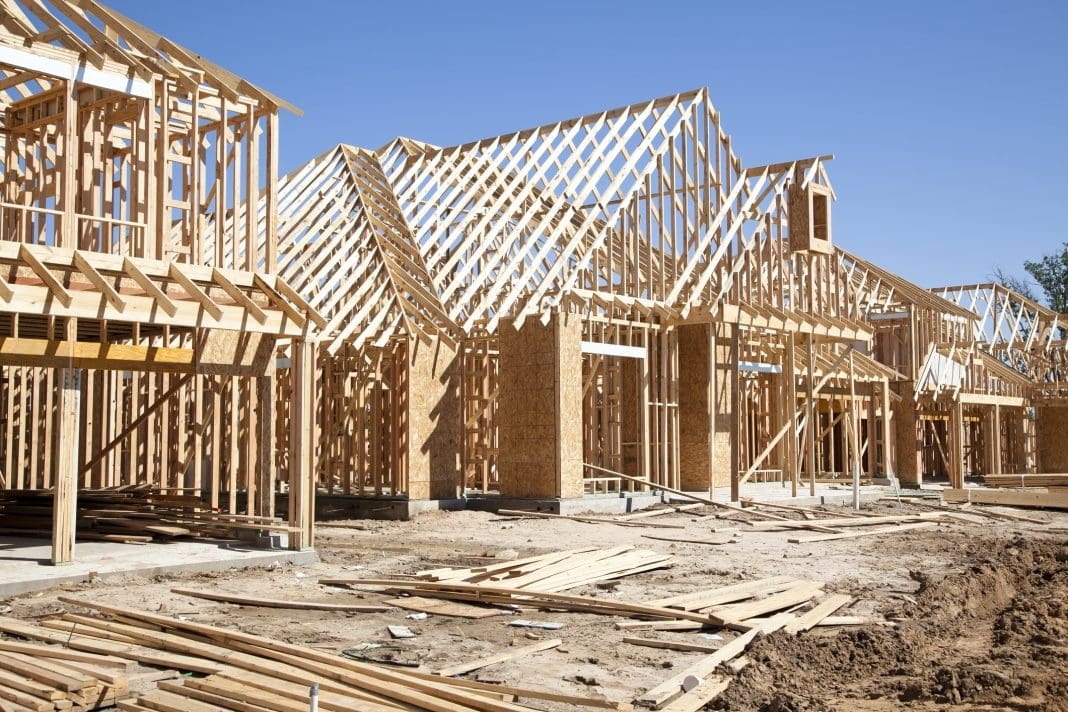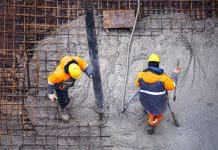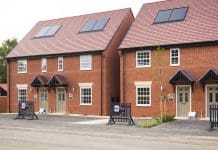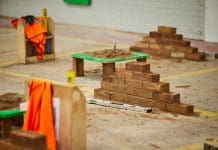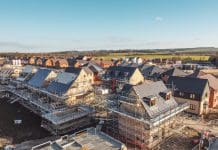Professor Robert Hairstans, the director of the Centre for Advanced Timber Technologies (CATT) at the New Model Institute of Technology and Engineering (NMITE), discusses how timber in the construction industry will help achieve UK Government goals for more homes and reduced emissions
The 30th of October marked the first budget of the new Labour Government. The budget aimed at addressing the stated £22bn public finance shortfall while changing the fiscal rules to allow project spending of up to £70bn a year.
It included £40bn in tax increases and £20bn in borrowing. Most of the bill falls on businesses through increased employer national insurance contributions. Whether this will create the enabling conditions for the pledge to build 1.5m homes over the course of the Parliament will remain to be seen (Labour Housing Pledge, 2023).
More support is needed to achieve 1.5m homes
Reducing planning constraints alone may not achieve this goal, with interest rates around 5%, influenced by government borrowing and inflation, impacting the mortgage market and affordability.
Housebuilders will only construct homes if people can afford them, but these housing targets must also address the critical need for social housing. The Chancellor has allocated £5bn for housing investment next year, including a £500m boost to the Affordable Homes Programme to build up to 5,000 extra homes.
What this additional investment doesn’t ensure is new homes will meet net-zero targets in a sector known for high carbon emissions. The housing target requires high-quality homes built faster and with less waste to achieve superior operational energy performance. Delivering homes to meet budget and efficiency targets will likely require a modern methods of construction (MMC) approach, incorporating off-site manufacturing and other innovations to balance speed, scale, and responsibility.
Sustainability is more of a key issue for housebuilding
Existing forms of delivery are already falling short of government targets, achieving roughly half of the 300,000 homes needed per year. Building starts were at 22,990 from April to June 2024, a 65% drop from the previous year’s quarter. Additionally, a productivity crisis looms, with about half a million fewer workers in construction compared to 2009, even as demand rises.
One factor for this decline is the chronic labour and skills shortage that plagues the sector. MMC offers an attractive alternative, as controlled environments at fixed locations often allow better training, flexible work patterns, and a more diverse workforce.
Additionally, the Future Homes Standard, effective in 2025, will require that all new homes be zero-carbon once the electricity grid is decarbonised. The Scottish Government has committed to enacting similar standards, which will mean enhanced insulation and airtightness requirements.
Although this can increase upfront costs, it reduces energy demand in the long run. Constrution Industry leaders are also calling for the UK Government to introduce embodied carbon legislation in addition to operation carbon via a proposed part Z amendment to the UK building regulations (Part Z).
Timber can play a crucial role in achieving targets
The Timber in Construction Policy Roadmap (TiCR) was developed collectively by UK Government departments and sectoral stakeholders to support this transition. Its aim is to increase safe timber use in construction, reduce embodied carbon, and create green jobs by driving investment in tree planting, forest management, and domestic supply chains.
TiCR encourages modern methods of construction (MMC) for faster, sustainable housing, with timber as a key component for embodied carbon reduction.
The TiCR aligns with Homes England’s strategic plan, supporting MMC as categorised in the UK Government’s definition framework to deliver quality homes quickly and sustainably. MMC aims to produce homes that are resource-efficient and lower in embodied carbon throughout their lifecycle, with timber as a primary enabler.
Structural Timber Association (STA) data suggests that only 8% of new homes in England currently use timber MMC. The main challenge remains scaling up timber MMC skills, capacity, and competency across the supply chain to meet demand.
There is already a large presence of timber in construction
Major housebuilders have invested in timber frame manufacturing. Barratt Homes acquired Oregon Timber Frame, initiating a £24m upgrade; Vistry Group acquired Countryside Partnerships; Cala acquired Taylor Lane; Taylor Wimpey committed to 25% of its homes being built in timber frame; and Bellway recently set a 30% target. However, investment in necessary skills has not kept pace with manufacturing advancements.
The New Model Institute for Technology and Engineering (NMITE) Centre for Advanced Timber Technology (CATT) is positioned to respond to these needs. CATT’s mission is to “stimulate collaboration across the industry both vertically (seed to end product) and horizontally (architecture, construction, digitalisation) as a common theme together with showing a wider audience how rewarding a career in timber can be”.
Established in 2021 in partnership with Edinburgh Napier University, a 2015 Queen Anniversary Prize winner for timber engineering, CATT drives cross-sector collaboration and promotes timber career paths.
Running concurrently with CATT’s establishment, a cross-sector working group developed Timber Development UK’s (TDUK) ‘Skills Action Plan’ for the sector. This included a timber competency framework endorsed by the Chartered Institute of Architectural Technologists (CIAT) and Chartered Institute of Building (CIOB). The framework has been tested in Timber Technology Engineering and Design short courses, showing a 30% female uptake from diverse backgrounds.
Housing delivery is complex and vital to both the economy and sustainable communities. It requires a long-term approach for investment and a skilled workforce. MMC, especially timber offsite, is particularly well-suited to meet urgent environmental goals particularly when embodied carbon and whole life cost is considered.


